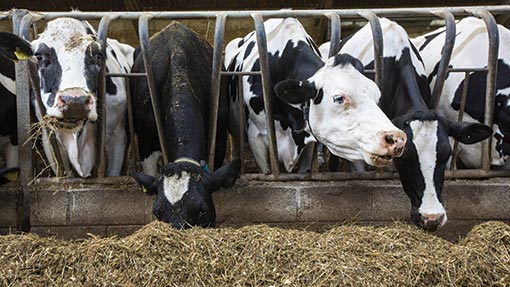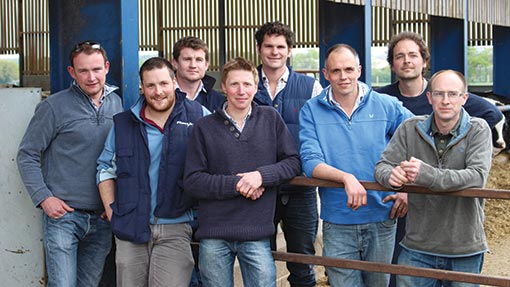Dairy farmer discussion group drives business improvements

Three-and-a-half years ago, nine dairy farmers who had returned home from college helped establish a DairyCo business discussion group to help improve their businesses.
Their aim was simple. They were seeking ways to cut costs and improve efficiency, as only two farms were making a profit. Fast forward to 2014 and seven are now making a profit and all continue to make improvements and question costs.
Over the years there have been many discussion groups, most focusing on extended grazing. But what makes this one different, says Dairy- Co extension officer Shirley Macmillan, is that it is business-focused.
They meet from October to May, visiting each member’s farm in turn, and also take a summer trip to visit progressive, profitable farms elsewhere in Britain.
How to get involved
DairyCo extension officer Shirley Macmillan started this business discussion group three-and-a-half years ago, based on the New Zealand model of everyone benchmarking and sharing their financial figures. They use DairyCo’s Milkbench service. Dairy farmers looking to get involved with their local discussion group should contact their local extension officer.
“We focus on the host farm’s Milkbench figures and the group suggests areas to look at. We do a farm walk and learn from the good things while also suggesting areas to change,” she says.
“We write a list up on the flip chart for the farmer and expect some items to be ticked off by the next meeting. This peer pressure encourages action.”
Jonny Crickmore, who runs 270 milkers on his farm near Bungay, Suffolk, says the group is invaluable in an area where there are few dairy farmers. “It is constructive criticism and there are not many neighbouring dairy farmers to learn from.”
Increasing milk from forage
More milk from forage has been the prize for two members of the group, in an area not known for its grazing due to the low rainfall of 24in/year (600mm/year).
Jamie Burroughs came to the conclusion that he had the wrong business model and has spent the past three years changing from an all-year-round calving to an autumn block-calving pattern, with his herd of 200 pedigree British Friesians.
“The group helped me to take a step back and look at what suited the farm, rather than continuing with what we had been doing historically and what other farms are doing.”
An autumn-calving pattern means he can use summer growth of his predominantly marsh grass, with early spring bite taken from a grass re-seed of light land that was formerly arable. Milk from forage was very low and has now increased to 3,000 litres, 42% of total [yield].
“We invested in tracks and paddocks to increase grass utilisation. The farm grows good spring grass and this year, we are seeing growth rates of 82kg DM/ha.”
It’s the second year Mr Burroughs has been using a plate meter and the net result is the business is now back to a positive gross margin.
Another benefit of the change to autumn calving is that labour costs have fallen from 40 to 35 labour hours a cow. Staff are used more efficiently, helping with harvest on the arable side when the herd is dry.
Ben Walker has also increased milk from forage. “Although we were operating a higher-yielding system averaging 11,000 litres, we were not making any money.”
Milk from forage has increased from 4% to 31%, while overall yields have only gone down 13%. Grazing has gone from two weeks a year to 20 last year by investing in tracks and paddocks.
Other members’ learning points
- Mark Larwood Bedding costs have been slashed by moving from straw to sand and this has equated to 0.5p/litre. Much of this is due to savings in labour.
- Rob Proctor Learned which physical indicators are best for monitoring herds to improve margins. These include feed rate, calving %, cull rates and loss rates.
- Alex Dann Managed to trim vet costs from 1.72p/litre to 1.4p, partly by reducing vet time on farm for routine work.
- Jonny Crickmore Deployed measures to aid cow flow, such as increased lighting in collecting yard, and estimates milking time has reduced by at least 20 minutes.
- James Roberts With only 11 dairy farmers in Essex, being a member helped him confirm he was making the right changes to his family business. They either had to invest in a new arable store, go all-arable or invest in cows. They decided to focus on cows and opted for high-yielding system.
- Toby Tibbenham Is changing to autumn calving and getting more from grazed grass via a system of paddocks and tracks. Drying cows off in the summer will then coincide with a lack of grazing.

(From left) Ben Walker, Toby Tibbenham, Jamie Burroughs, Mark Larwood, Alex Dann, Rob Proctor, Jonny Crickmore and James Roberts.
See also: Eight steps to improve dairy herd foot-bathing regime
